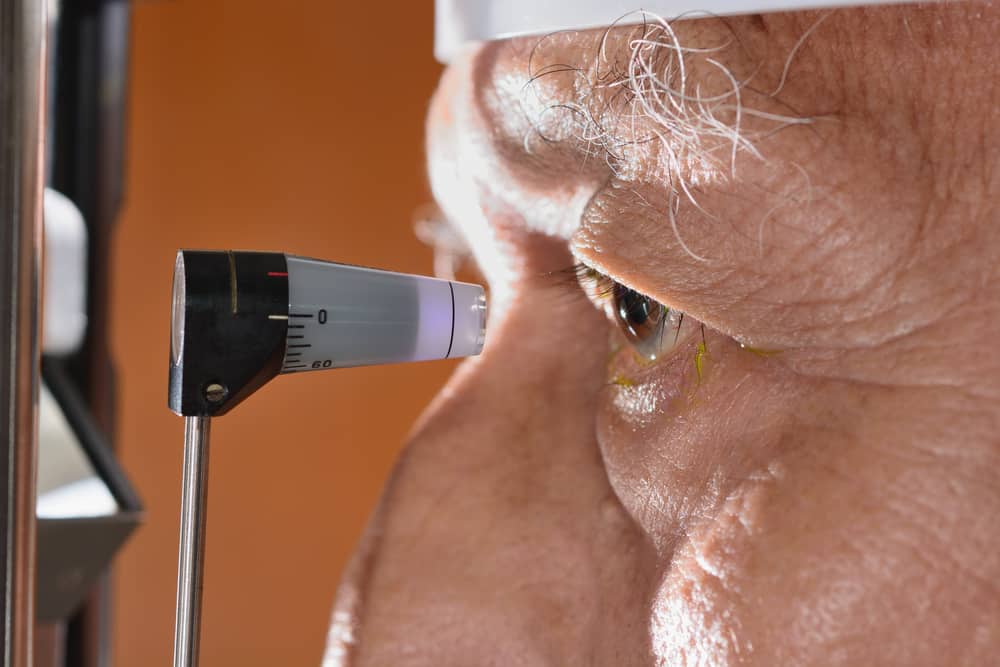January is Glaucoma Awareness Month, an important time to discuss the symptoms of this sneaky but devastating disease. According to the Glaucoma Research Foundation (GRF), more than three million people in the United States have glaucoma – and that number is projected to grow to 4.2 million by 2030. The problem with glaucoma is its gradual nature, which means you may not notice a change in your vision until the condition is at an advanced stage. Scroll down to find out more about the symptoms of glaucoma and what you can do to slow the progression of the disease with your doctor’s help.
What Are the Symptoms of Glaucoma?
What Is Glaucoma?
So, what is glaucoma? Glaucoma actually refers to a group of eye conditions, all of which damage the optic nerve by creating abnormally high pressure in your eye. Left untreated, glaucoma is one of the leading causes of blindness for adults over the age of 60. Fortunately, by addressing the symptoms of glaucoma you can slow the progression of the disease.
Glaucoma Risk Factors
Before we explore the symptoms of glaucoma, let’s address risk factors that may make glaucoma more likely. Inform your doctor if you have any of the following glaucoma risk factors:
- Family history of glaucoma
- Having high internal eye pressure, something your eye doctor can identify
- Having had an eye injury or eye surgery
- Being over age 60
- Being Black, Asian, or Hispanic
- Having medical conditions like diabetes, heart disease, high blood pressure, and sickle cell anemia
- Taking corticosteroid medications
Symptoms of Open-Angle Glaucoma
As we mentioned above, “glaucoma” actually refers to a variety of conditions. The most common type of glaucoma is open-angle glaucoma, which may not create any symptoms until you notice significant vision loss. The first sign of open-angle glaucoma is often the loss of side vision, or peripheral vision. However, since peripheral vision may fade slowly, it is extremely important to schedule regular visits to your eye doctor as you get older. If you notice any unusual changes to your vision, it’s time to give your eye doctor a call.
Symptoms of Acute Closed-Angle Glaucoma
Unlike open-angle glaucoma, acute closed-angle glaucoma should be treated as a medical emergency. This type of glaucoma can cause severe damage to the optic nerve within a few hours, which is why it should be treated immediately. The condition often produces the following symptoms:
- Severe, throbbing eye pain
- Headache, nausea, and vomiting
- Blurry or foggy vision
- Halos around lights
- Red eye
- Dilated pupil
Treating Glaucoma Symptoms
Unfortunately, vision loss due to glaucoma is permanent. However, if your eye doctor diagnoses your glaucoma in its early stages, it can be treated appropriately. Regular eye exams can help you and your doctor slow and prevent your vision loss with medication, eyedrops, and other tools. Regular eye exams are especially important if you have any of the glaucoma risk factors listed above.
_____
So, what are the symptoms of glaucoma? Loss of peripheral vision, blurry vision, eye pain, headaches, nausea, and more. Depending on the type of glaucoma you have, symptoms may arise very quickly, very gradually, or not at all until you’ve developed serious vision loss. For that reason, be sure to keep up with your eye exams as you get older. That way, your eye doctor can help prevent and treat glaucoma-related vision loss and eye discomfort.
Are you worried about developing glaucoma? If you live in southwest Missouri, Heffington’s is here for you. Since 1975, the Heffington family has been assisting the Springfield community with top-quality eye care and affordable eyeglasses and contacts. Whether it’s a simple eye exam, glaucoma treatment, or a new pair of glasses, we’re ready to help! To learn more about what we can do, send an email to [email protected] or give us a call at 417-869-3937 (Optiland location) or 417-882-3937 (House of Vision location). We hope to hear from you soon!

